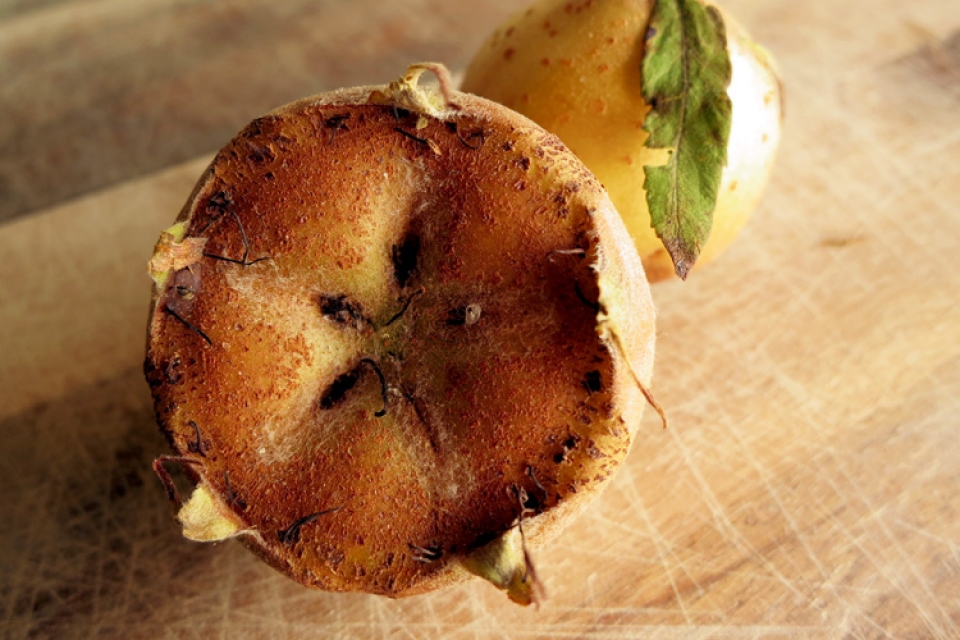Adventures with Medlars
It all started with a free bag of medlars. I had been interested in using medlars for some time, and so when a free bag of medlars close to their prime were offered up by our Produce Department in December, I snagged them to make medlar jelly.
Medlars are the fruit of the medlar tree and are one of the few winter fruits we can find in Vermont. Medlars are unique in that they need to be bletted before being eaten, similar to quince and persimmons. What’s bletting you ask? Essentially, bletting is when you allow the fruit to over-ripen, allowing more sugars to develop and to allow for a decrease in the amount of acid and tannins which make the unbletted fruit astringent. You can tell if a medlar has been bletted by how squishy it is. If there is a lot of give to your squeeze, they are ready. If the fruit still feels a bit solid, it needs to be bletted further.
I separated the bag of medlars I received into two groups: one group that was already bletted and ready to be used and a second group that still needed more bletting. The second group I laid out on plates and placed on our coldest window sills. Cool temperatures aid the bletting process (but putting them in the refrigerator won’t work for bletting).
I followed this recipe from David Lebovitz, green apple, lemon, and all. Medlars are a bit on the low pectin side, so Lebovitz added the green apple in order to increase the amount of pectin. Be sure to follow his instructions for letting the boiled fruit drain through cheesecloth overnight without pushing any liquid out – it will result in a beautiful rose-colored liquid.
Despite following the recipe to the letter, my first attempt at medlar jelly resulted in, well, syrup. My medlar liquid never jelled, but when cooled, it took on a thick, syrupy consistency, much like maple syrup. The syrup is great on pancakes or drizzled over cooked oatmeal or brown rice cereal.
After my remaining medlars had bletted for another week or so, I tried my hand at the jelly again, following the same recipe, but this time adding Pomona’s Universal Pectin to the liquid, following the directions in the box for quince jelly. As the liquid boiled away, it didn’t seem like the added pectin was doing the trick, but once I transferred the liquid to jars and refrigerated them, they jelled. Not as firmly as I would have liked, but I think it qualifies as jelly.
What I learned from this process is that medlars can be a fun fruit with which to play. I think I could have let the medlars I used blet further, which may have helped with the jelling process. Lebovitz also suggests adding a quince instead of an apple to see if that makes a difference. Either way, let us know what you use medlars for and how you like them on the City Market Facebook page!
